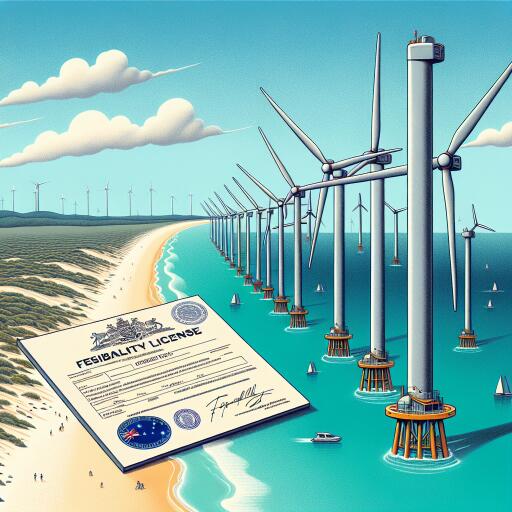
Australia Advances with Offshore Wind Farm Development off Its Eastern Shores
In a significant move towards bolstering clean energy infrastructure, the Australian government has recently allocated a feasibility license to Equinor, the Norwegian powerhouse in energy, in collaboration with Oceanex Energy. This initiative paves the way for in-depth studies surrounding the potential establishment of a massive wind farm along the nation’s east coast, specifically more than 20 kilometers off the coast of Newcastle, New South Wales. This project, dubbed the “Novocastrian Wind project,” stands as a beacon of Australia’s green energy aspirations.
The announcement was made by Chris Bowen, the Energy Minister, who highlighted the project’s ambitious goal to produce over 2 gigawatts (GW) of electricity. This impressive figure is sufficient to power approximately 1.2 million homes, showcasing the potential of offshore wind to significantly contribute to the country’s energy mix. Should the feasibility studies confirm the project’s viability, Oceanex, with Equinor by its side, will be positioned to request a commercial licence to erect what could become a landmark offshore wind farm.
Australia’s journey towards expanding its renewable energy portfolio has accelerated with the passage of legislation in November 2021, which laid the foundation for the development of offshore wind projects. These ventures are celebrated for their scale and efficiency, often outpacing their onshore counterparts in productivity. The recently granted feasibility licence enables the recipients to conduct comprehensive environmental assessments and geotechnical studies, essential steps towards making the Novocastrian Wind project a reality.
The move comes amidst debates on energy policy, highlighted by proposals from opposition factions advocating for nuclear energy as a replacement for coal-fired power, despite existing prohibitions on nuclear power plants in Australia. Such discussions underscore the broader national dialogue on transitioning to cleaner energy sources, against the backdrop of economic and environmental considerations.
Under the current government, led by Prime Minister Anthony Albanese, there has been a pronounced shift towards green energy, aiming to achieve net-zero emissions by 2050. A significant aspect of this green transition involves increasing the share of renewable energy in Australia’s power supply to 82% by 2030. However, with current renewable energy sources accounting for around 40% of the power supply, the government has embarked on an ambitious plan, committing over A$40 billion to underwrite new projects in wind, solar, and battery storage.
This announcement is part of a broader wave of initiatives, evidenced by the government’s recent green light for six feasibility studies for wind farm projects off the coast of Victoria. With major international players such as Orsted and Iberdrola leading some of these investigations, Australia is positioning itself as a formidable player in the global renewable energy sector.
Through these strategic moves, Australia is not only advancing its domestic agenda for cleaner, more sustainable energy but also contributing to the global effort against climate change. As the potential for offshore wind continues to gain recognition, the country is well-placed to harness the power of its coastal winds, propelling itself toward a greener, more renewable future.





Leave a Reply